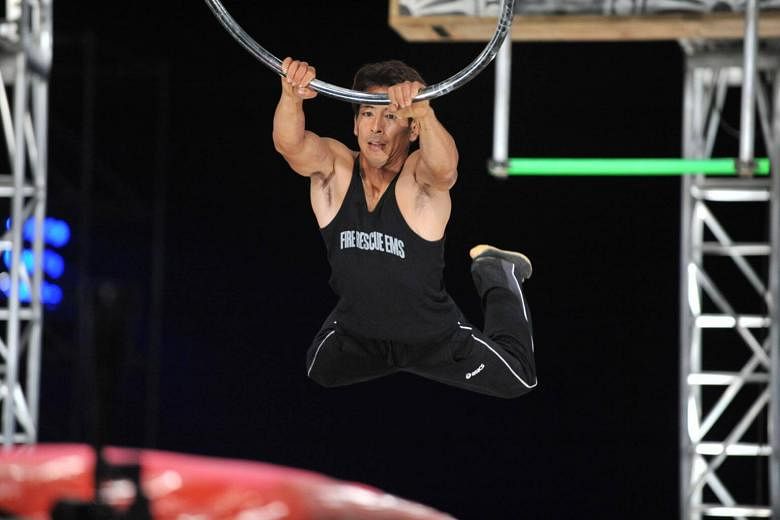BOSTON • In the first season, only 1,000 people submitted video-taped auditions.
For the 10th season, which started airing in May, the producers of American Ninja Warrior received 50,000 tapes.
Based on the Japanese show Sasuke, where participants navigate an obstacle course, it has taken off because it offers a level playing field.
In what other sport can you watch a doctor compete alongside a stay-at-home mother, a teacher or a soldier? A 19-year-old is as welcome as a 70-year-old.
A former Olympian or professional football player has as much chance as an amputee.
No excuses are asked for and, to the credit of the competitors, no excuses are offered.
Even when they bounce head-first off a padded obstacle or splat foolishly into the water after a fall, most pop up waving their arms triumphantly.
They celebrate the journey as much as the destination.
For those unfamiliar with American Ninja Warrior, the destination is a buzzer that the contestant hits after completing the obstacle course. The tricky part is that there are four separate stages and each is increasingly difficult.
Completing all four stages in the fastest time wins you US$1 million (S$1.36 million).
The courses are so gruelling that, in 10 seasons, only two competitors out of thousands have finished all of them.
Watching other sports is undeniably entertaining but no other sport is as inspiring on an individual level.
When you observe skilled athletes do something amazing, it may inspire you to train harder to do what they do.
But with American Ninja Warrior, many of the contestants were inspired by the show to overcome some tremendous personal obstacles, from poverty to illness to unhealthy habits.
For some, it is a chance at redemption, for others a comeback from physical debilitation. Contestants have competed with rheumatoid arthritis, diabetes and even a recent open-heart surgery.
Seeing average Americans who have built their own American Ninja Warrior-style obstacle courses in their yards or even inside their homes in order to train, inspires others to get off the couch and be more active.
This season has featured a run by Ryan Carson, whose right leg had been amputated below the knee.
With only three weeks of training, he managed to complete four obstacles that had defeated many other competitors.
He in turn was inspired by Artis Thompson III, an amputee who had competed on several previous seasons .
American Ninja Warrior has been particularly inspiring for women. They must face the same course as the men with no modifications to account for size or strength.
In 2014, Kacy Catanzaro bested men to become the first woman to qualify for the finals and, so far, the only woman to complete a City Finals course.
The popularity of American Ninja Warrior has been a boon for businessmen. Gyms specifically designed to train the next generation of contestants have popped up all over America, with young children dancing through Floating Steps and sprinting up the Warped Wall.
And who does not want a shot at winning that million dollars?
GUARDIAN

